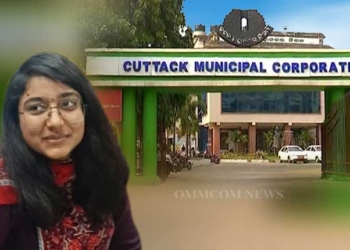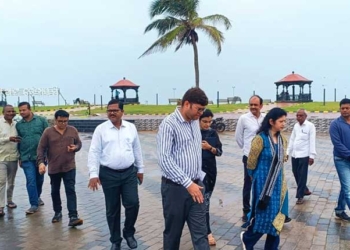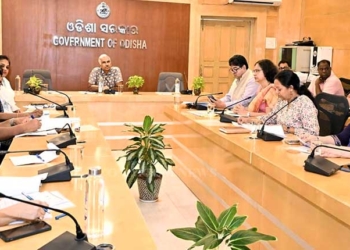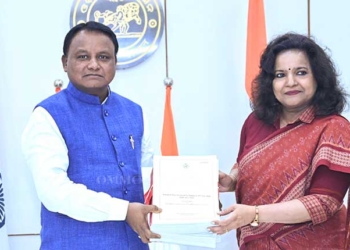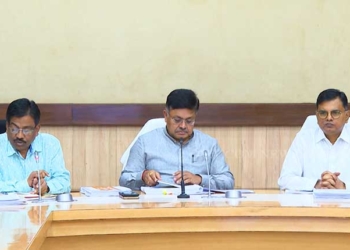Puri: As the annual sojourn of Lord Jagannath and his Siblings is three days away, here are some interesting facts about the world renowned festival.
1: A Legacy: There are a fixed number of families of traditional carpenters who build the chariots every year from the time of its inception and the methods, measurement and techniques to build the same are handed down through generations. All the chariots construction is started and finished simultaneously.
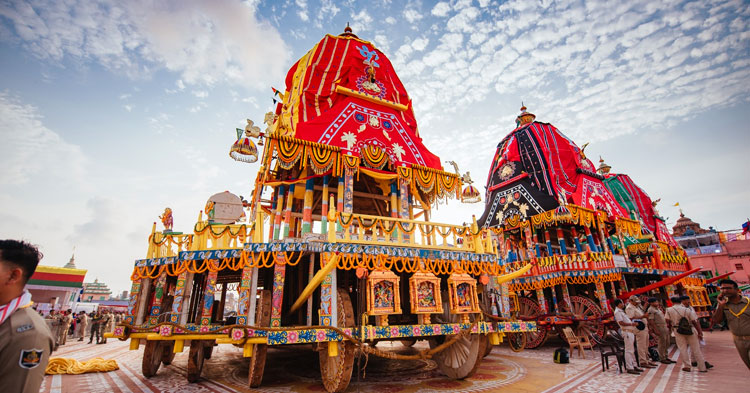 2: The Magnificence Of Chariots: Measuring almost 45ft high, having 18, 16 and 14 wheels, the three chariots are built to precision without any measuring tapes. All that is used is the age-old technique of measurement using hands and fingers. Interesting thing to note is that to make these massive chariots not a single metal nail is used but the old school carpentry method of using wooden pegs and joints.
2: The Magnificence Of Chariots: Measuring almost 45ft high, having 18, 16 and 14 wheels, the three chariots are built to precision without any measuring tapes. All that is used is the age-old technique of measurement using hands and fingers. Interesting thing to note is that to make these massive chariots not a single metal nail is used but the old school carpentry method of using wooden pegs and joints.
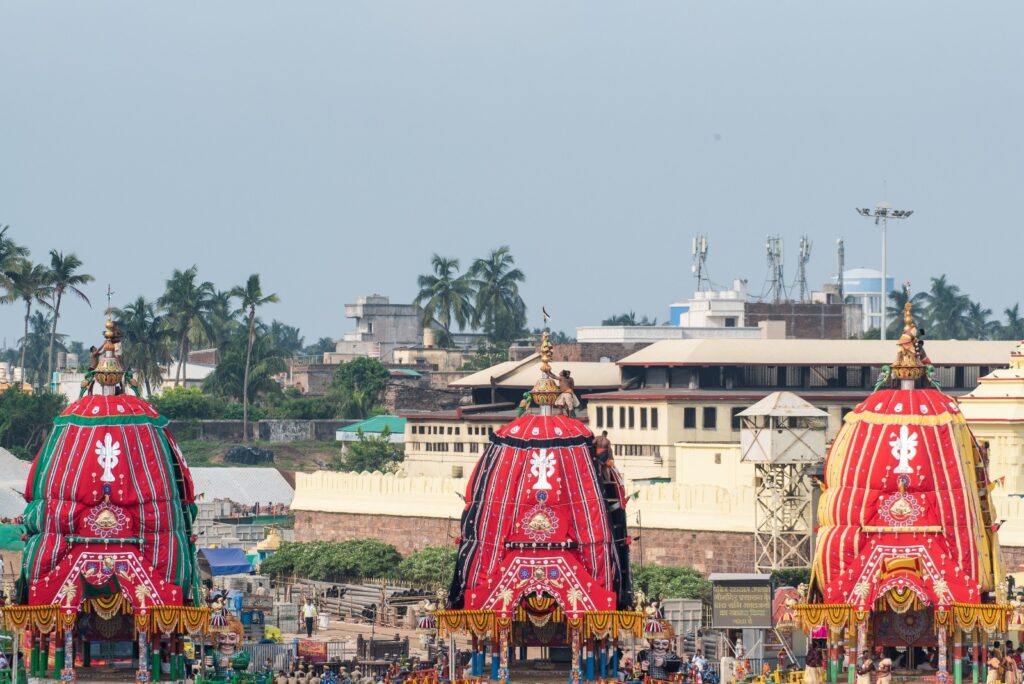
3: Source of Wood: The wood used in the construction of this comes from two nearby forests Dashpalla and Ranapur. Since the amount of wood used for these chariots is a lot, double the amount of saplings are planted simultaneously.
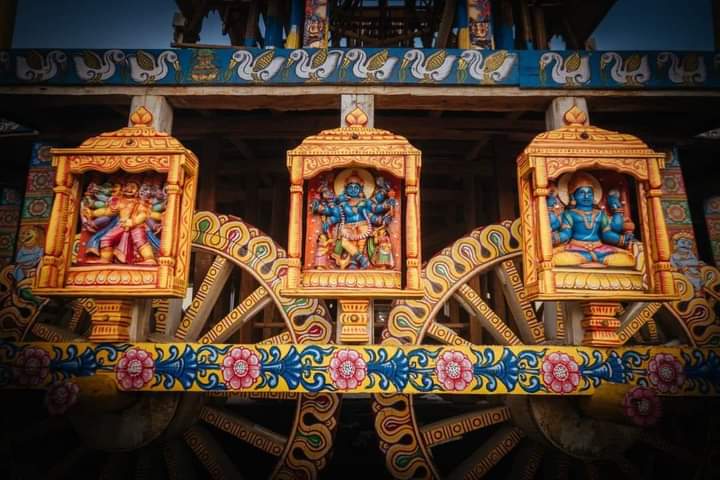
4: Origin of the Juggernaut: The English word Juggernaut is derived from Jagannath. It means a large, heavy vehicle, especially an articulated lorry or a huge, powerful, and overwhelming force. When the British officials saw the sheer size of the chariots were astonished beyond imagination and formed this word for anything that was huge and a vehicle.
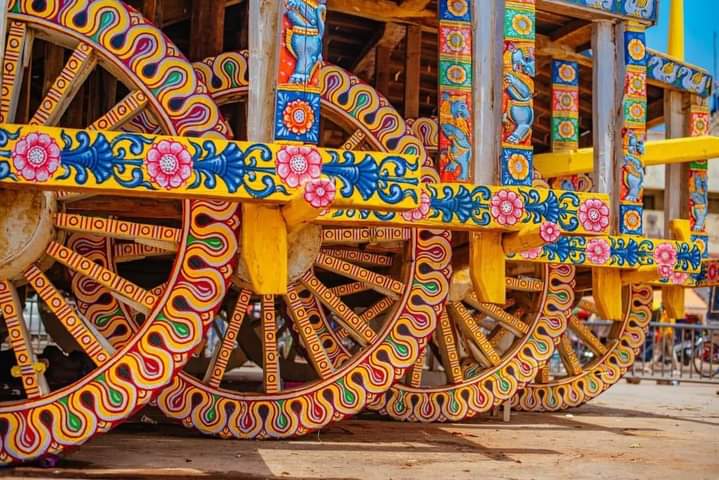
5: Naming: Lord Jagannatha’s chariot is called Nandighosa. It is forty-five feet high and forty-five feet square at the wheel level. It has sixteen wheels, each of seven-foot diameter, and is decked with a cover made of red and yellow cloth. The chariot of Lord Balarama, called the Taladhwaja, is the one with the Palm Tree on its flag. It has fourteen wheels, each of seven-foot diameter and is covered with red and green cloth. Its height is forty-four feet. The chariot of Subhadra, known as Dwarpadalana, literally “trampler of pride,” is forty-three feet high with twelve wheels, each of seven-foot diameter. This chariot is decked with a covering of red and black cloth – black being traditionally associated with Shakti and the Mother Goddess.
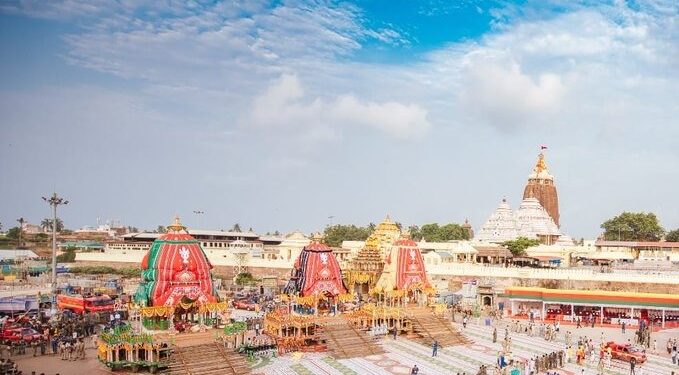
6: Downpour on the Day of Festival: Records are a testimony that there has not been a single Rath Yatra when it has not rained. There have been times that it hasn’t rained for days before Rath Yatra, but Lord Indra ensures that it pours on the when the grand chariots tread the distance between Singhadwara and Maa Gundicha’s abode.
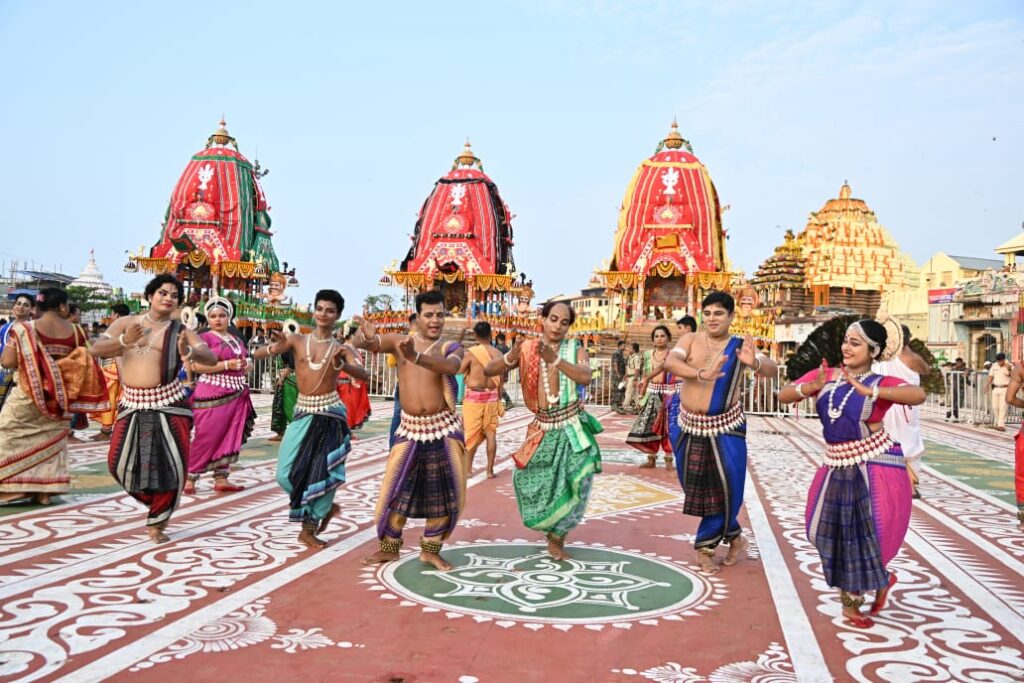
7: Even Gods Need Cajoling: Common Folklore has it that the deities refuse to go to their aunt’s house (Gundicha) and the chariots eerily refuse to budge even an inch with 1000 of people pulling it with all force. But after much coaxes and requests the deities give consent and the chariots start moving.
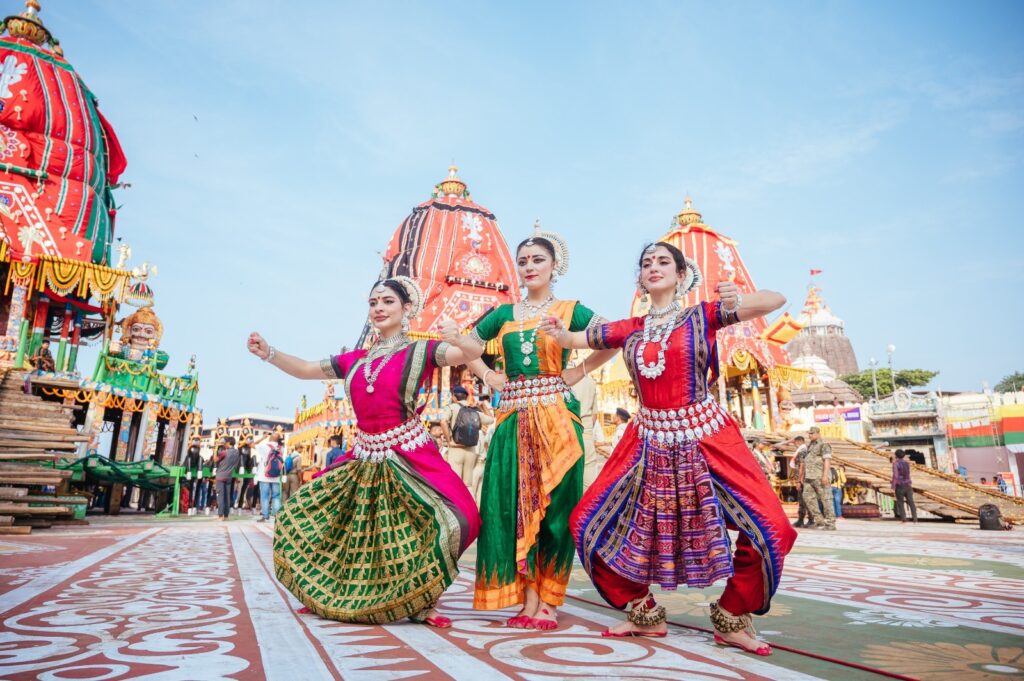
8: A Humble Service: It is only after that the presiding king of Puri sweeps all the chariots with a broom made out of gold and using fragrant water that the pulling of the chariots commences. The Puri king reverently titled as ‘Gajapati’, is the ‘Adhyasevak’ or the first and foremost Servitor of the Holy Trinity.
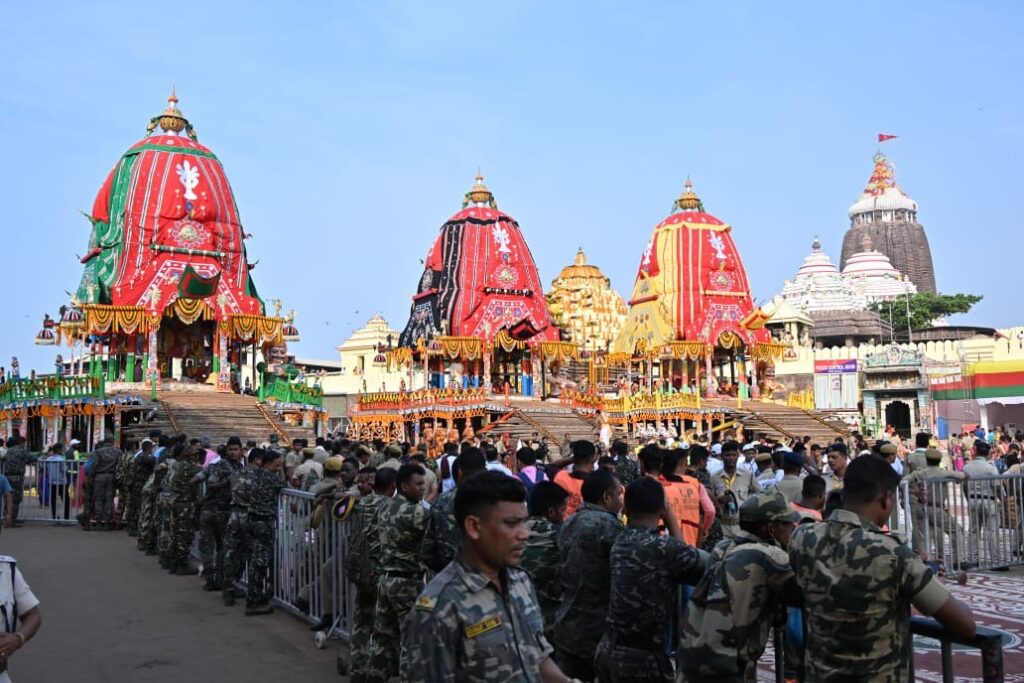
9: Servitors to the Lord: Dahuka are a sect of servitors to the lords apart from Suaras and Mahasuaras. The Dahukas have a unique tradition of singing something known as Dahuka Boli or Dahuka Gita. These are mostly rhyming poems which symbolise things like fertility and life cycle and have a lot of explicit words which is generally not heard near religious ceremonies and are recited very openly without holding back any of this explicit lyrics. Apparently the legend goes as the Chariots do not move if these are not recited. But due to certain reasons this tradition was banned by the Temple officials from 1995 and apart from a few exceptions since then it is now a dying tradition.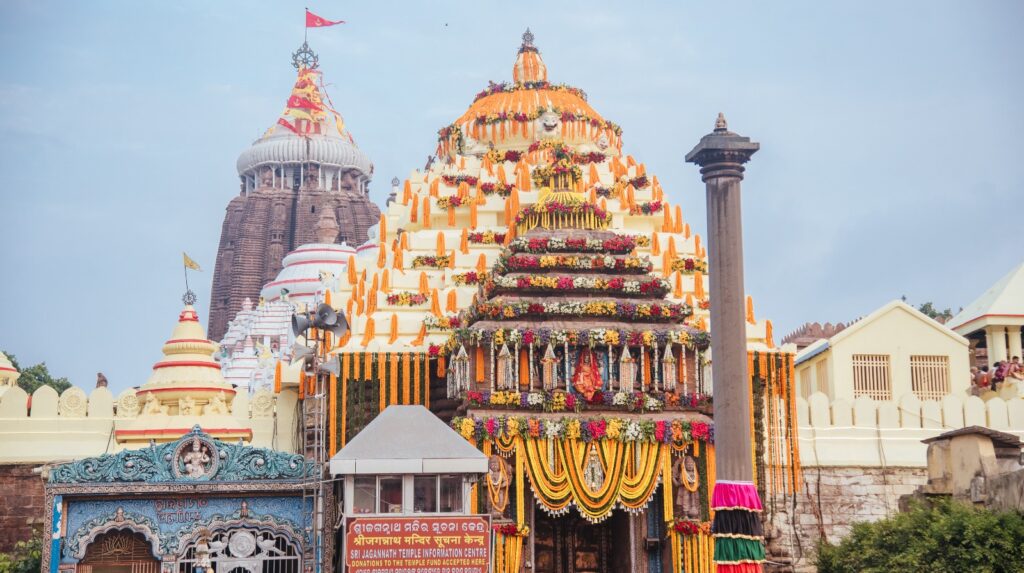
10: A Grand Kitchen: The wood used in the making of these chariots after the festival are used to cook Mahaprasad which is made up of 56 different varieties and is cooked in the Temple kitchen which is the largest community kitchen in the world and can cook for up to 1 lakh persons at a time. The amazing thing about this is that the amount of food cooked every day is the same and it has never been wasted ever.





